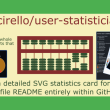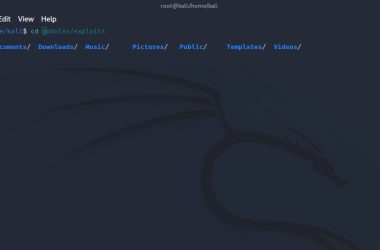The reality of today’s web development landscape is far more complex. Vanilla CSS and JavaScript are no longer the norm for building web apps; instead, there’s a myriad of frameworks and libraries. This choice can be bewildering for beginners. Moreover, once you’ve picked a technology to learn, the question looms: How can you efficiently acquire these skills for free?
By the end of this journey, you’ll not only find answers to these questions but also discover a treasure trove of free resources to transform from a complete beginner into a capable web developer. Additionally, I’ll unveil three critical mistakes you should avoid.
But before we delve into the intricacies of various technologies, let’s grasp the fundamental workings of a website.
You can watch my YT video regarding to this article:
🏗 How Website Works
At its core, a website is simply a collection of files stored on a server. These files can be accessed through a web browser like Chrome or Firefox, which sends requests to the server via the internet. The server, in turn, may execute operations such as storing relevant data using a database.
When you’re coding for what users see in their browsers, you’re venturing into front-end development. Conversely, if you’re coding for the server’s actions upon receiving requests, you’re diving into back-end development. You can choose to master both aspects, so you’ll become a full-stack developer, but keep in mind that excelling in just one of these domains is a valuable achievement in itself.
🥢Fronted Mastery
HTML & CSS
Let’s commence with front-end development. HTML, CSS, and JavaScript serve as the foundational building blocks in this realm. To comprehend their roles, consider a “Sign In” button on Netflix. HTML declares the button’s existence to the browser, CSS specifies that it should be red with white text, and JavaScript dictates the actions to be taken upon clicking the button. However, there’s a common pitfall here—spending excessive time on tutorials for these languages.
Learning by doing is the key, and interactive platforms like W3Schools are your allies. For HTML, work through exercises until you reach HTML graphics. Cover everything up to the CSS grid for CSS and explore the JS HTML DOM for JavaScript. Test your knowledge with quizzes and exercises.
CSS has a reputation for being time-consuming and challenging to debug, as it doesn’t provide explicit error messages. To tackle this, consider employing a CSS framework, such as Bootstrap or Tailwind CSS. Bootstrap offers pre-built components, but customization can be limited, and your site may look generic. In contrast, Tailwind CSS grants you greater control over aesthetics and boasts excellent documentation. To master it, learn how to create custom components with Tailwind CSS.
JavaScript
Switching gears to JavaScript, we aim to optimize our workflow. When using JavaScript to build a project, you’ll notice that HTML and JavaScript reside in separate files, requiring multiple updates when modifying a component. This disjointed workflow can hinder productivity. To address this issue, we turn to JavaScript frameworks, with two popular choices being Angular and React. Angular, a full-fledged framework, has a steep learning curve, while React, a flexible JavaScript library, is more beginner-friendly, especially if you’ve already grasped JavaScript. Dive into React using the official “Intro to React” tutorial to build a tic-tac-toe game, and then explore its main concepts.
Building Portfolio
With a solid grasp of front-end development, it’s time to assemble your portfolio. This brings us to another significant mistake—creating a portfolio prematurely. Build more projects first. Select projects that resonate with your daily life, such as a note-taking web app or a workout tracker. The aim is to demonstrate your ability to create functional web apps, which will undoubtedly make you more appealing to potential employers.
💻Backend Mastery
If you’ve absorbed all this knowledge and become a proficient front-end developer, you could consider your journey complete. However, if you hunger for more, it’s time to delve into back-end development. In the realm of back-end development, you write code for servers to perform operations like data storage, retrieval, or interfacing with other servers. Java with Spring and Python with Django are viable options, but for a swifter route, Node.js with JavaScript is recommended. Leveraging your existing JavaScript knowledge, Node.js offers a seamless transition to server-side programming.
Node.js enables you to run JavaScript on servers, facilitating the backend logic while using JavaScript code. Express, a popular library, simplifies backend development. Begin by building an app from scratch with Express and MongoDB, a NoSQL database, using tutorials like the one by Traversy Media. Embrace the learning process by tackling challenges, referring to documentation, and seeking help online—the skills you acquire now will serve you well as a software engineer.
To complete the journey, build a WhatsApp clone by following a beginner-friendly tutorial. Return to the front-end projects you created and integrate a backend. You now possess the skills and a portfolio of projects and are ready to seek job opportunities. Beware, though—many aspiring developers stumble at the final hurdle by neglecting interview preparation. While smaller companies may hire based on skills alone, larger organizations conduct interviews with specific questions. Don’t let your hard-earned skills go to waste; equip yourself with the knowledge and techniques required for successful interviews.
Bright Data Can Help You Access the World of Web Data
Instead of wasting countless hours watching tutorials, why not take into account the priceless tool that Bright Data provides? This amazing #1 web platform gives you the tools to convert webpages into structured data by giving you access to powerful web scrapers, award-winning proxy networks, and ready-to-use datasets for download. It is the top web data platform in the globe, and it will give your coding projects a boost.
😎Conclusion
This concludes our journey. Remember, the path to becoming a proficient web developer is marked by hands-on learning, continuous improvement, and a commitment to honing your skills. Good luck on your coding adventure!
Best free resources to learn web development:
🏗 Frontend web development
👉 HTML: https://www.w3schools.com/
👉 CSS: https://www.w3schools.com/css/default.asp
👉 Javascript: https://www.w3schools.com/js/default.asp
👉 Tailwind Documentation: https://tailwindcss.com/docs
👉 Intro to React: https://react.dev/learn/tutorial-tic-tac-toe
👉 React Basics: https://legacy.reactjs.org/docs/hello-world.html
👉 React Tailwind Project by Traversy Media: https://youtu.be/FiGmAI5e91M?si=Sj8GP7x9M9XAa29U
💻 Back end development
👉 NodeJS with Express and MongoDB by Traversy media:
https://www.youtube.com/watch?v=SBvmnHTQIPY&t=0s
👉 Express documentation: https://expressjs.com/en/api.html
👨💻 Full stack development
👉 🔴 Build a Whatsapp Clone with MERN: https://www.youtube.com/watch?v=gzdQDxzW2Tw&t=0s
Stay connected with me:
🔗 LinkedIn: linkedin.com/in/codewithshahan/
📹 YouTube : https://www.youtube.com/programmingwithshahan
🐦 Twitter : twitter.com/shahancd





